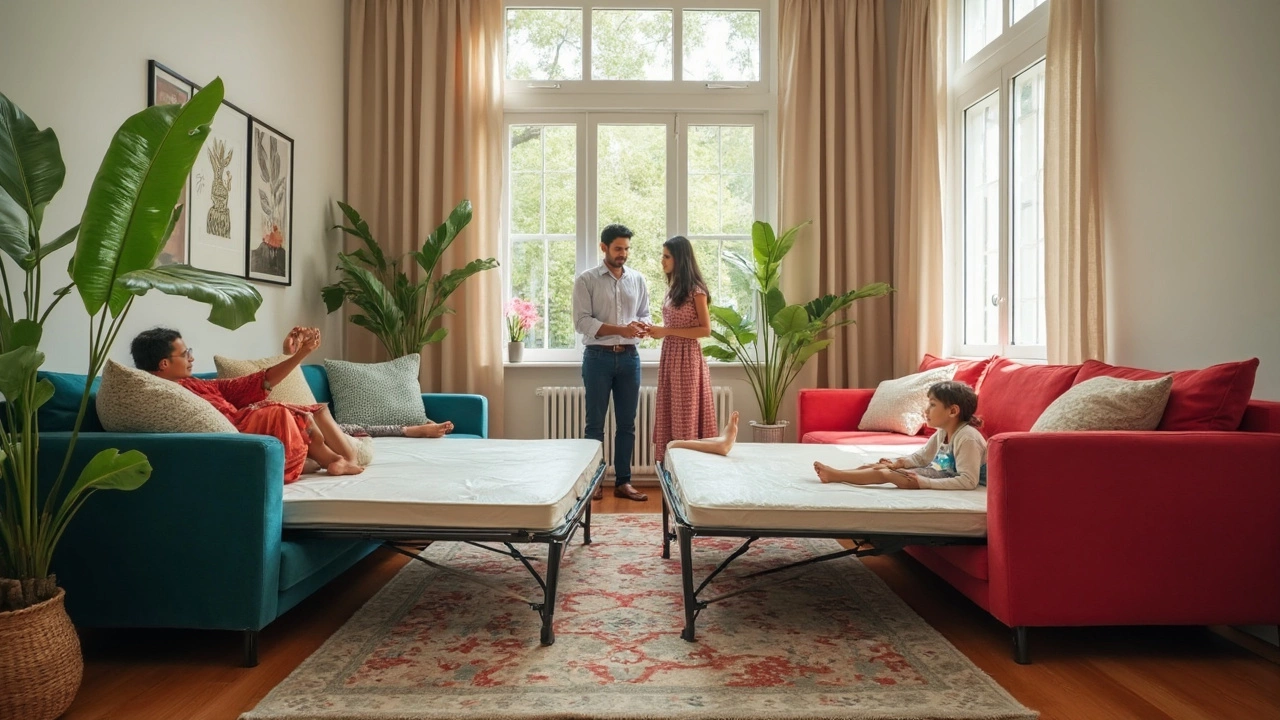Best Sofa Bed Guide: Find Comfort and Style in One Piece
Thinking about a sofa that can double as a bed? You’re not alone. A good sofa bed saves space, cuts furniture costs, and gives guests a place to crash without turning the living room into a hotel. But not every sofa bed is created equal. Below you’ll get the real‑world info you need to pick a model that feels like a couch by day and a proper bed by night.
What Makes a Sofa Bed Comfortable?
Comfort starts with the mattress system. There are three main types: spring-in‑frame, foam‑only, and hybrid. Spring systems give a bouncy feel and tend to be cheaper, but they can squeak after a few years. Foam mattresses provide even support and stay quiet, especially high‑density memory foam. Hybrids blend both, offering a balance of bounce and body‑contouring.
Look for a mattress thickness of at least 4‑5 inches. Anything thinner feels like a couch topper, not a bed. If you have back problems, a medium‑firm foam or a pocket‑coil hybrid will keep your spine aligned. Test the sleep surface if you can – lie down for a minute and see if it feels supportive.
Next up, the mechanism. Pull‑out sofas use a slide‑out frame, while click‑and‑convert models fold the back and seat forward. Pull‑out designs usually give a bigger sleeping area (often 72‑80 inches long) and are easier to set up. Click‑and‑convert sofas are sleek, but the mattress folds in half, which can feel less comfortable and may develop pressure points.
Don’t forget the couch cushions. Thick, high‑resilience foam cushions keep the day‑time seating firm. If the cushions are too soft, you’ll sag when you sit, and the pull‑out may be harder to get out. A removable cushion cover is a bonus – it makes cleaning a breeze and lets you swap fabrics for a fresh look.
How to Choose the Right Sofa Bed for Your Space
Measure twice, buy once. Start with the room’s width and depth, then add clearance for the sofa’s movement. Pull‑out models need extra floor space behind them to slide the mattress out, usually about 2‑3 feet. If your living room is tight, a click‑and‑convert may fit better, but double‑check the folded dimensions.
Consider the style. A modern low‑profile sofa bed works well in minimalist apartments, while a tufted, high‑back design fits classic décor. Fabric choice matters, too. Leather is easy to wipe clean but can feel hot in summer. Performance fabrics like microfiber or polyester blends resist stains and are pet‑friendly.
Set a budget and stick to it. You can find reliable sofa beds from $500 to $2,000. Below $800, you’ll mostly see foam mattresses and basic mechanisms. Above $1,200, expect better springs, higher‑grade foam, and sturdier frames made from kiln‑dried hardwood.
Finally, think about long‑term use. If you host guests often, durability trumps ultra‑softness. Look for a frame with reinforced joints, preferably glued and doweled, not just stapled. A warranty of at least 5 years on the frame and 2 years on the mattress signals a manufacturer’s confidence.
With these pointers, you can narrow down the options and pick a sofa bed that looks great, feels comfy, and lasts for years. Happy hunting, and may your evenings be as relaxed as your mornings on a truly good sofa bed.
How to Choose a Comfortable Sofa Bed Without Regrets
Shopping for a sofa bed can be tricky—you want it to look good, save space, and actually feel comfy to sit and sleep on. This article breaks down what you really need to check before you buy, from mattress quality to the type of opening mechanism. You’ll also get practical tips, warning signs to watch for, and clever hacks for making any sofa bed more comfortable. Make the hunt easier and avoid a sore back or cranky guests later. No more guessing—just real advice to get the right sofa bed the first time.





